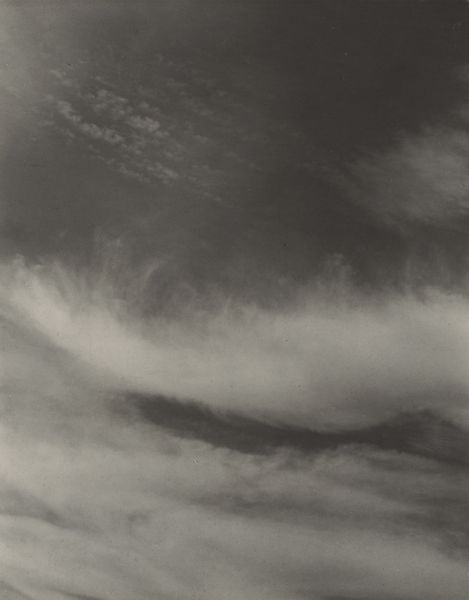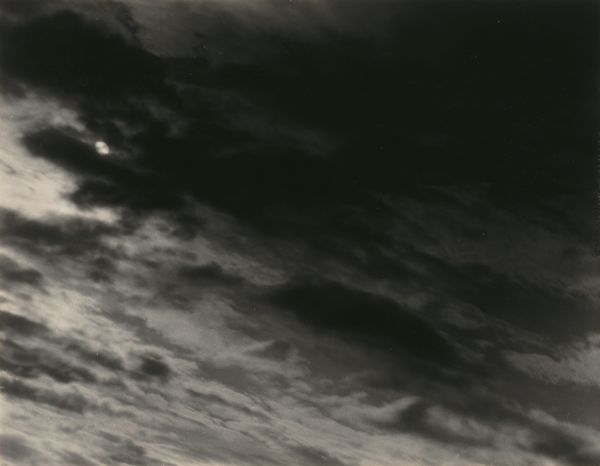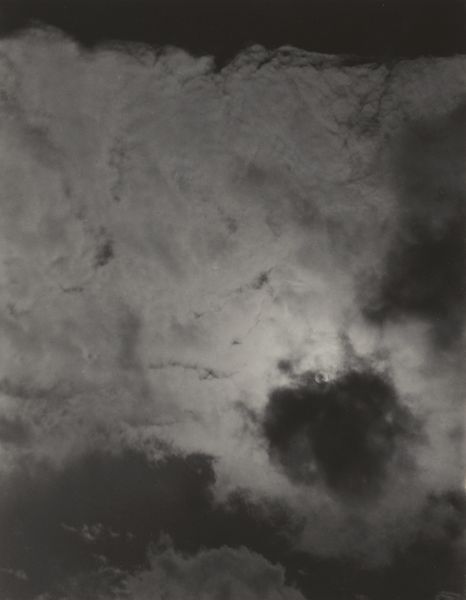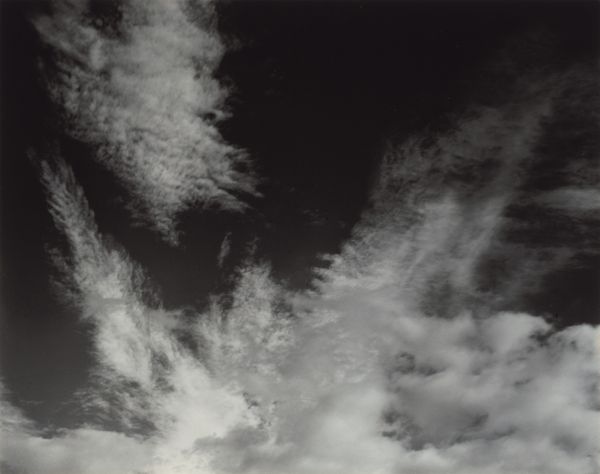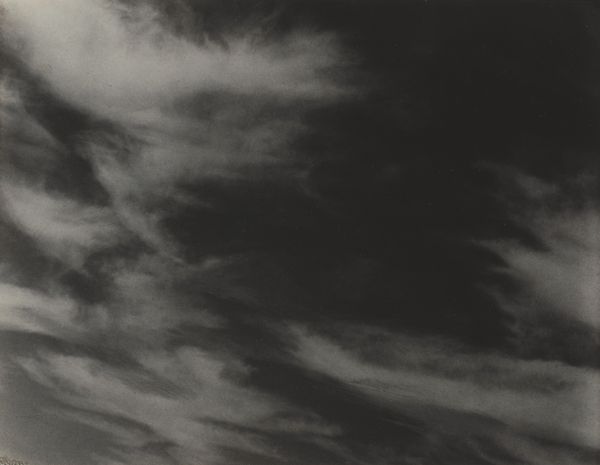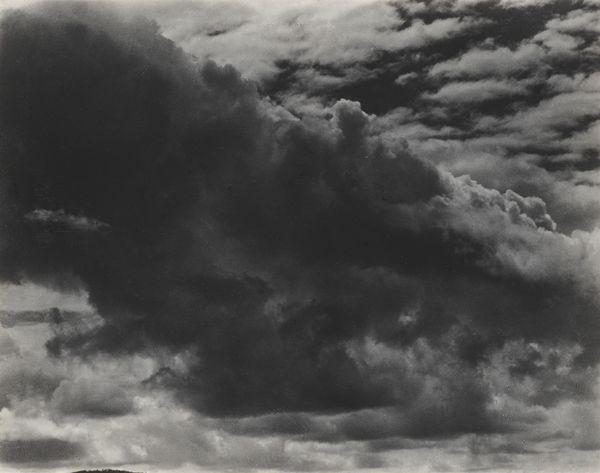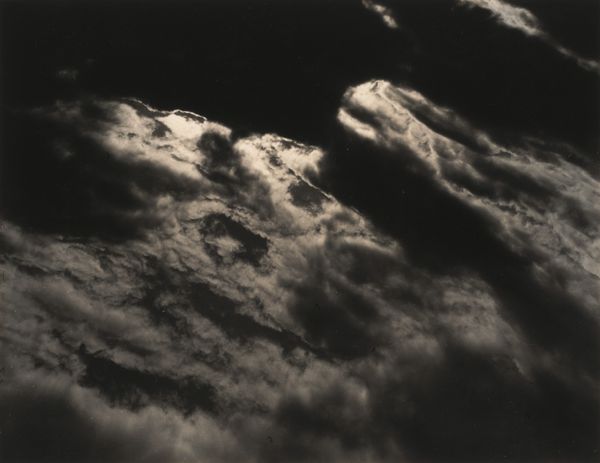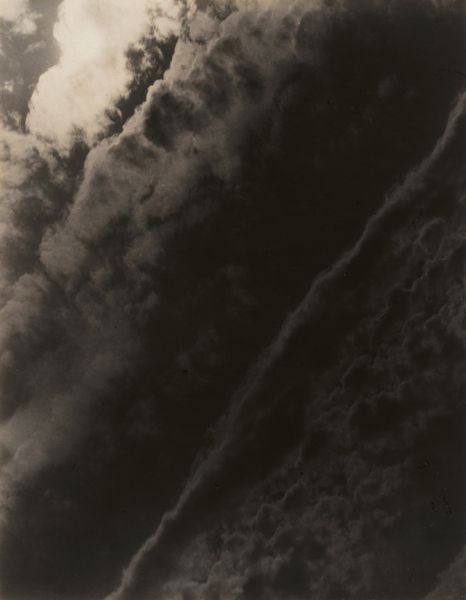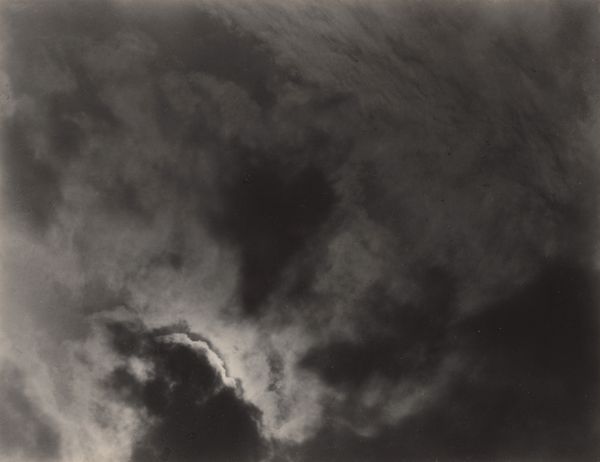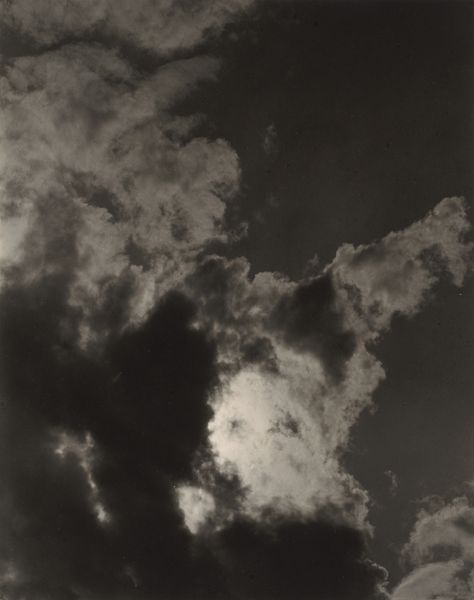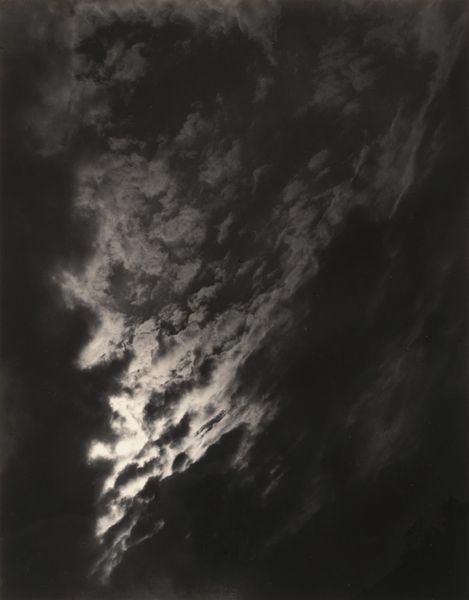
Dimensions: image (visible): 23 × 18.5 cm (9 1/16 × 7 5/16 in.) mat: 56.4 × 45.1 cm (22 3/16 × 17 3/4 in.)
Copyright: National Gallery of Art: CC0 1.0
Editor: Here we have Alfred Stieglitz's photograph, "Music—A Sequence of Ten Cloud Photographs, No. X," from 1922. It’s a black and white image, seemingly of a cloudy sky above a dark horizon line. It's rather melancholic, I think. What do you see in this piece, especially considering its title? Curator: The title is indeed telling. Stieglitz called these cloud photographs "Equivalents," suggesting that these abstracted forms function as equivalents to inner states of feeling. The striated clouds against the stark monochrome provide a tonal range, almost like musical notes on a scale. Consider how the artist uses light and shadow— the bright patch in the middle set against the inky hills—to create a deliberate composition that evokes certain emotions. Editor: So, you are suggesting that the form of the clouds, their arrangement and tonality, communicate feelings? That's a direct translation from natural form to subjective content? Curator: Precisely. It's not merely a depiction of clouds, but a carefully constructed arrangement. Look at the varying textures, the soft, almost indistinct forms versus the sharper edges of the silhouetted horizon. These elements orchestrate a visual symphony, if you will. Think of the composition as the grammar of this visual language and the tone, the clouds as letters in that system. What "words" are being communicated? Editor: I see now; the composition directs how one might "read" or "hear" it. The darkness at the bottom definitely adds weight to the overall feeling, setting a somber key. So the impact really comes from the formal interplay, the composition more than the subject matter. Curator: Precisely! It is about understanding how the material and formal elements work in concert to convey meaning. Do you find that your initial read has been influenced? Editor: Absolutely. Paying attention to the formal elements reveals the careful choices that bring about the emotion; not the scene itself, but the relationships between forms in the scene. Curator: Exactly. Analyzing visual grammar of the scene changes the image from gloomy to profound.
Comments
No comments
Be the first to comment and join the conversation on the ultimate creative platform.
